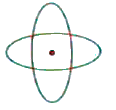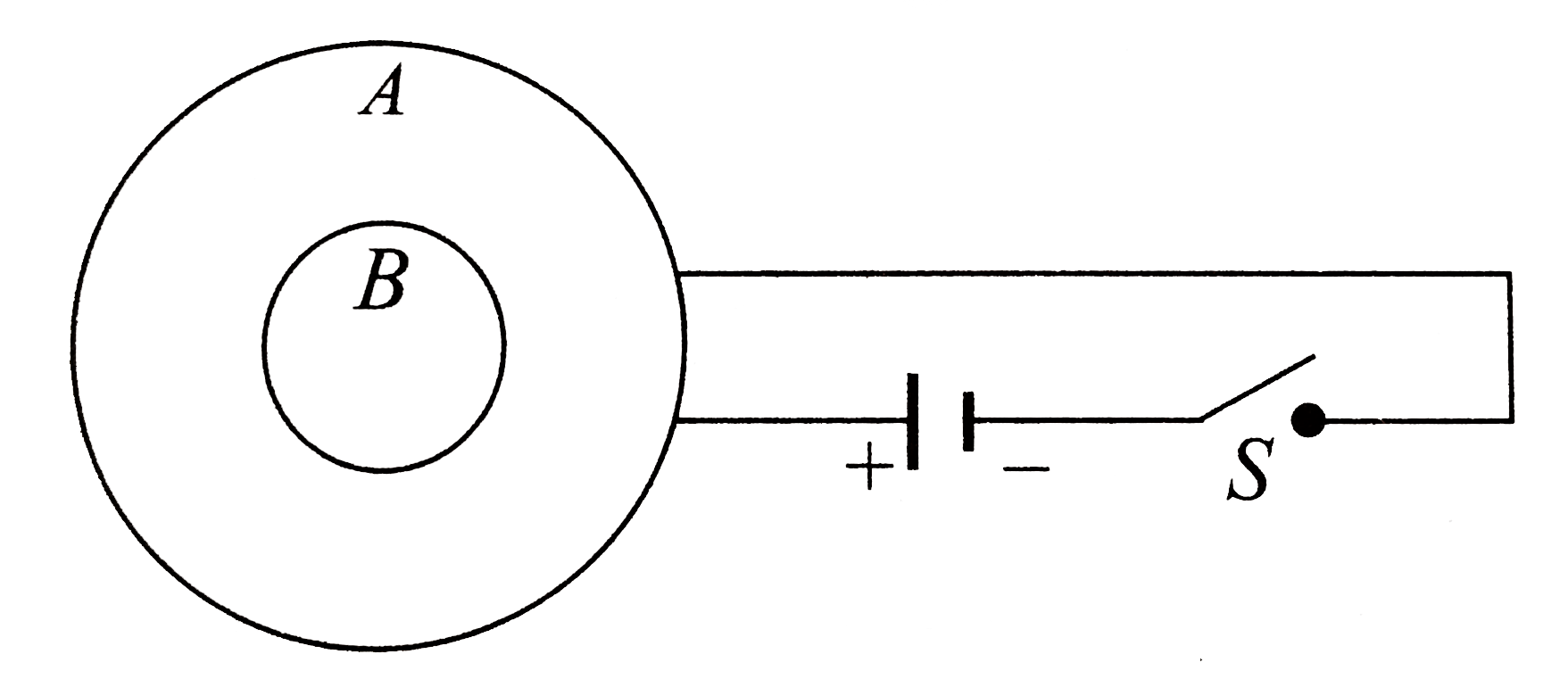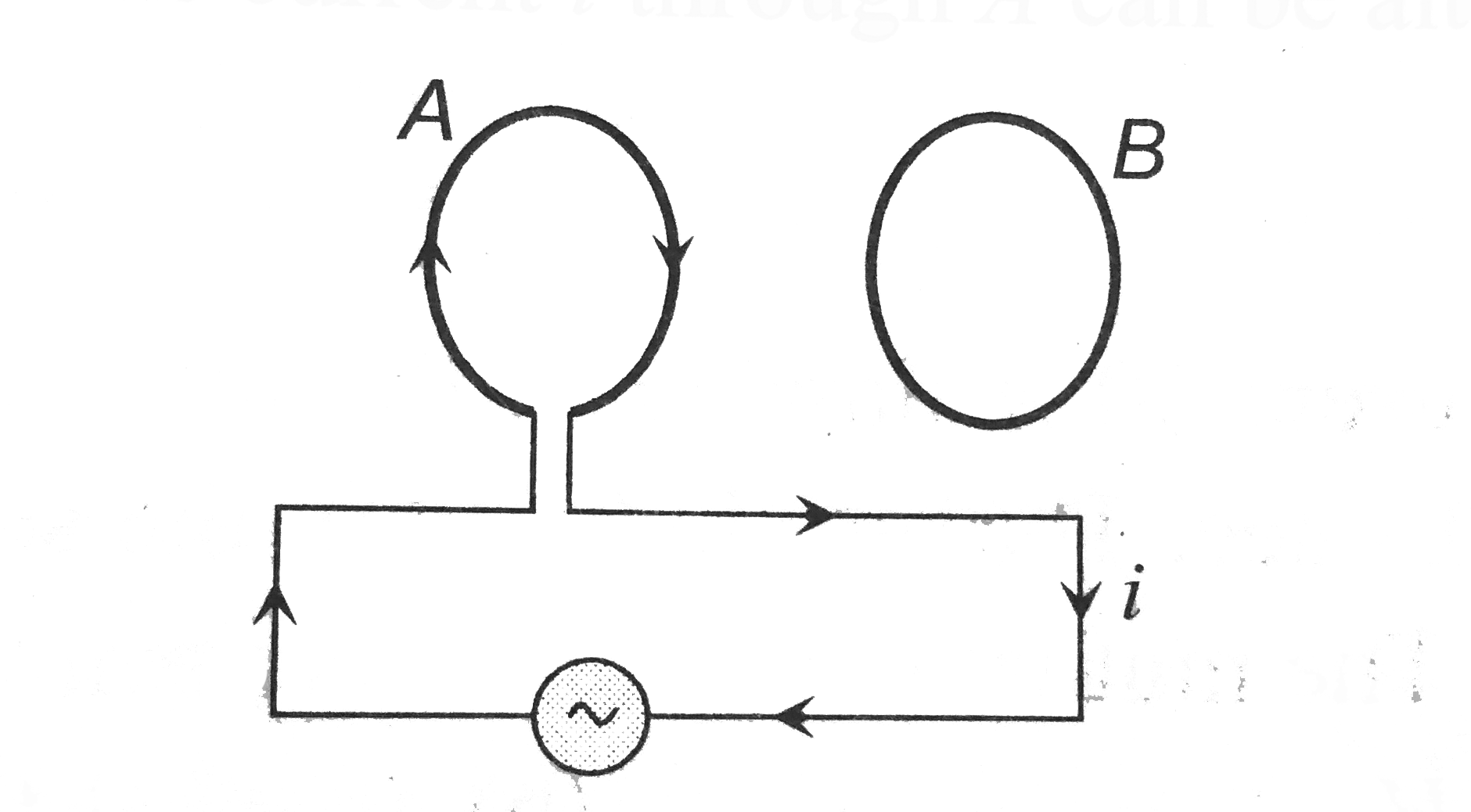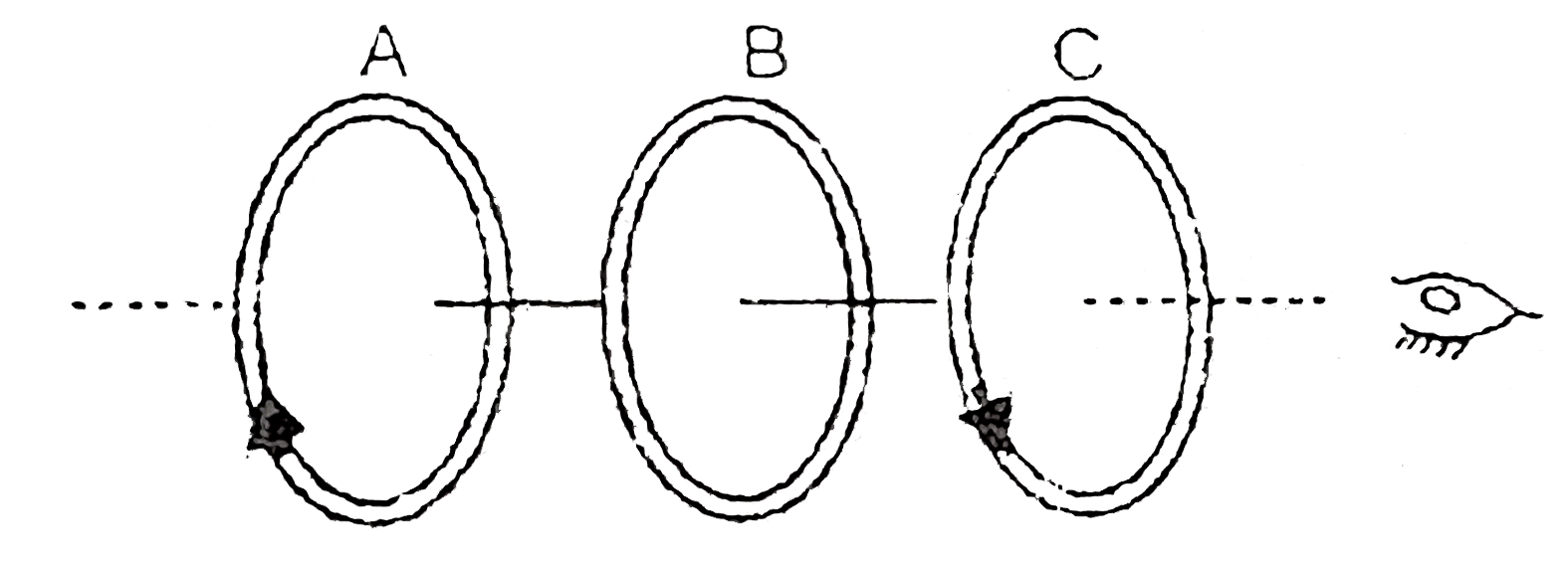Two identical coils A and B are kept on a horizontal tube side by side without touching each other. If the current in the coil A increases with time, in response, the coil B
is attracted by A
remains stationary
is repelled
rotates
The correct Answer is:C
To solve the problem, we need to analyze the situation involving two identical coils, A and B, and how they interact when the current in coil A changes.
1. Understand the Setup:
- We have two identical coils, A and B, placed side by side on a horizontal tube without touching each other.
2. Current in Coil A:
- It is given that the current in coil A increases with time.
3. Magnetic Field Due to Coil A:
- When the current in coil A increases, it generates a magnetic field around it. The strength and direction of this magnetic field depend on the magnitude and direction of the current flowing through coil A.
4. Change in Magnetic Field:
- As the current increases, the magnetic field around coil A also changes. According to Faraday's law of electromagnetic induction, a changing magnetic field can induce an electromotive force (EMF) in a nearby conductor.
5. Induction in Coil B:
- The changing magnetic field from coil A induces an electric current in coil B. This phenomenon is known as electromagnetic induction.
6. Direction of Induced Current in Coil B:
- According to Lenz's law, the direction of the induced current in coil B will be such that it opposes the change in magnetic flux through it. Since the magnetic field from coil A is increasing, the induced current in coil B will flow in a direction that creates a magnetic field opposing the increase.
7. Interaction Between Coils A and B:
- Since both coils are identical and the induced current in coil B flows in the opposite direction to the current in coil A, the two coils will experience a force due to the interaction of their magnetic fields.
8. Conclusion:
- The induced current in coil B will flow in the opposite direction to the current in coil A, resulting in a repulsive force between the two coils. Therefore, coil B will repel coil A.
Final Answer:
When the current in coil A increases, coil B will experience an induced current that flows in the opposite direction, causing coil B to repel coil A.
---
- We have two identical coils, A and B, placed side by side on a horizontal tube without touching each other.
- It is given that the current in coil A increases with time.
- When the current in coil A increases, it generates a magnetic field around it. The strength and direction of this magnetic field depend on the magnitude and direction of the current flowing through coil A.
- As the current increases, the magnetic field around coil A also changes. According to Faraday's law of electromagnetic induction, a changing magnetic field can induce an electromotive force (EMF) in a nearby conductor.
- The changing magnetic field from coil A induces an electric current in coil B. This phenomenon is known as electromagnetic induction.
- According to Lenz's law, the direction of the induced current in coil B will be such that it opposes the change in magnetic flux through it. Since the magnetic field from coil A is increasing, the induced current in coil B will flow in a direction that creates a magnetic field opposing the increase.
- Since both coils are identical and the induced current in coil B flows in the opposite direction to the current in coil A, the two coils will experience a force due to the interaction of their magnetic fields.
- The induced current in coil B will flow in the opposite direction to the current in coil A, resulting in a repulsive force between the two coils. Therefore, coil B will repel coil A.
When the current in coil A increases, coil B will experience an induced current that flows in the opposite direction, causing coil B to repel coil A.
Topper's Solved these Questions
- BOOK - DC PANDEY ENGLISHCHAPTER - ELECTROMAGNETIC INDUCTIONEXERCISE - Match the columns5videos
ELECTROMAGNETIC INDUCTION
- BOOK - DC PANDEY ENGLISHCHAPTER - CURRENT ELECTRICITYEXERCISE - Medical entrances gallery97videos
CURRENT ELECTRICITY
- BOOK - DC PANDEY ENGLISHCHAPTER - ELECTROMAGNETIC WAVESEXERCISE - Sec C22videos
ELECTROMAGNETIC WAVES
Similar Questions
Two identical circular loops of metal wire are lying on a table without touching each other. Loop-A carries a current which increases with time. In response, the loop-B
View SolutionTwo circular coils A and B are placed close to each other. If the current in the coil A is changed, will some current be induced in the coil B? Give reason.
View SolutionTwo coils of wires A and B are mutually at right angles to each other as shown in the figure. If the current in one coil is changed, then in the other coil
 View Solution
View SolutionWhen two co-axial coils having same current in same direction are bring to each other, then the value of current in both coils:
View SolutionThere are two coils A and B as shown in Fig.
 View Solution
View SolutionTwo circular coils A and B are facing each other as shown in figure. The current i through A can be altered
 View Solution
View SolutionTwo circular coils A and B are facing each other as shown in figure. The current i through A can be altered
 View Solution
View SolutionTwo identical coils each of self-inductance L , are connected in series and are placed so closed to each other that all the flux from one coil links with the other. The total self-inductance of the system is
View SolutionThree identical circular coils A, B and C are placed coaxial (with planes parallel to each other) The coils A and C equal currents in opposite direction as shown. The coils B and C are fixed in positions and the coil A is moved towards B wiyj uniform motion then -
 View Solution
View SolutionTwo coils P and Q are kept near each other. When no current flows through coil P and current increases in coil Q at the rate 10A/s, the emf in coil P is 15 mV. When coil Q carries no current and current of 1.8A flows through coil P, the magnetic flux linked with the coil Q is
View Solution

